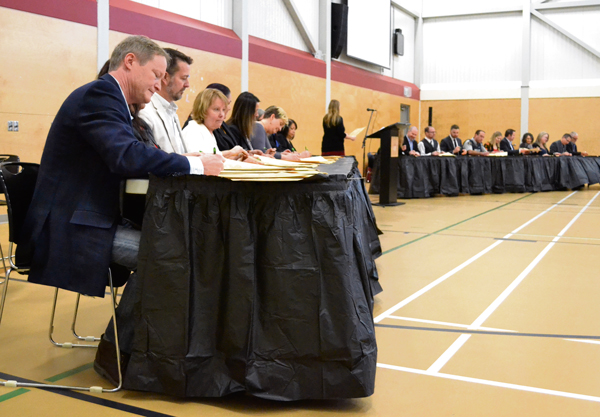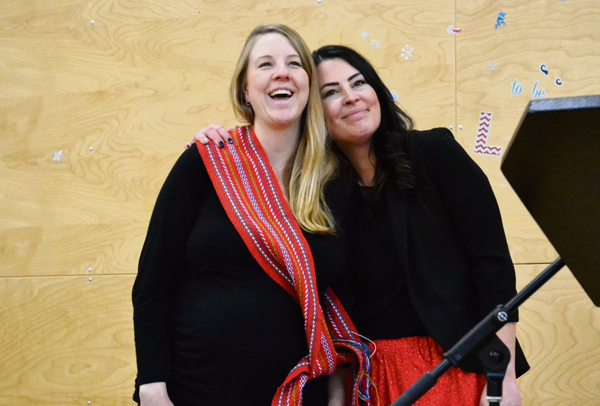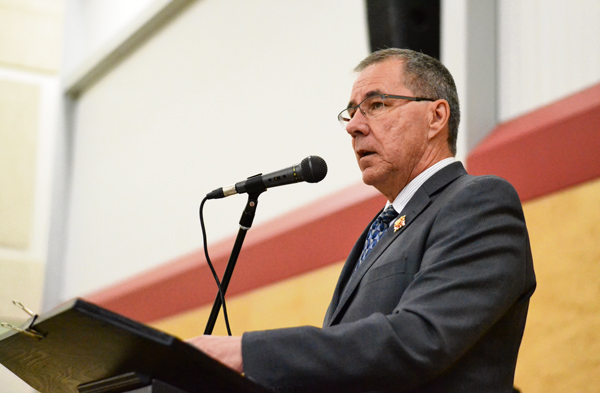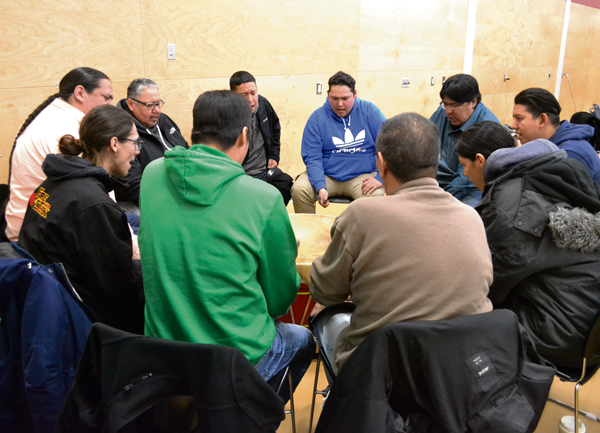
Twenty-two signatories committed to walking on a path to reconciliation on Thursday by putting ink to paper.
The Prairie Rivers Reconciliation Committee (PRRC) had its first meeting two years ago; however, partners formally signed a declaration in One Arrow First Nation to start their journey.
“It’s about us saying ‘This isn’t a trend. This isn’t something short-term.’ We commit to long-term action, which is authentic relationship building as well as education,” said PRRC Chair Robin Bendig, who also works with Great Plains College.

Reconciliation isn’t a straightforward term, she explained. If you ask each of the committee members and partners what their definition of reconciliation is, you’ll likely get dozens of different answers.
Bendig herself was inspired by the late Elder Walter Linklater.
“He’d always said ‘If you can, you do,’ and so I felt we could make an impact in these communities. We could engage others,” she said.
“(That’s) really where it started.”
Lieutenant Governor Russell Mirasty—the first Indigenous person to hold the position—and his wife Donna attended the event.

It began with a pipe ceremony, followed by Almightyvoice Education Centre students singing O Canada in Cree and Krystle Pederson singing the Métis National Anthem. The Rocky Mountain Singers Drum Group also presented an honour song.
When One Arrow First Nation Chief Tricia Sutherland was asked to host, she “jumped at the chance.”
Sutherland’s mother, who passed away about 20 years ago, is a residential school survivor. Sutherland has shared her mother’s scarring experiences during a blanket exercise, which is one of the PRRC’s methods of education.
“It just felt like a family working together and coming through this heartache together,” she said.
“That’s when the reconciliation committee—I felt it, I had to be there. I had to be apart of this.”
According to the Truth and Reconciliation Commission (TRC) of Canada, the federal government underfunded church-ran residential schools, leaving students malnourished and living in poorly constructed buildings with minimal staff. Many students passed away from tuberculosis and never made it home.
The last residential school closed in Punnichy in 1996.
From the late 1950s to 80s, Indigenous children were placed with non-Indigenous families as part of The Sixties Scoop.
The effects of this history, says the TRC, have been passed down through generations of Indigenous people.
“Education needs to start within our communities also, not just expecting non-First Nations to know the history. Most of our people don’t know the history,” said Sutherland, adding it dates back to long before the development of Canada.
“We need to have our kids…be proud of their identity and find their identity again.”
Sheryl Spence, the mayor of Warman, has been on the PRRC since it began.
“I had no idea about half of the stuff that took place, not even half, a quarter of the stuff that took place and I was living amongst it,” she said about Indigenous history.
“(Reconciliation is) going to take time. We need to be patient. We need to understand that we all come from different places.”
Bendig said the PRRC also receives teachings from elders and cultural advisors, participates in anti-racism education and learns about powwows and regalia.

Representatives from the Office of the Treaty Commissioner, RCMP, Saskatchewan Polytechnic, Saskatchewan Health Authority, Batoche National Historic Site, Mennonite Central Committee, Towns of Aberdeen, Rosthern and Osler and Cities of Martensville and Warman were only a few that signed the reconciliation declaration.
The PRRS gifted a signed declaration to Mirasty.
One Arrow First Nation is a Cree community located near Batoche, about an hour southwest of Prince Albert.

